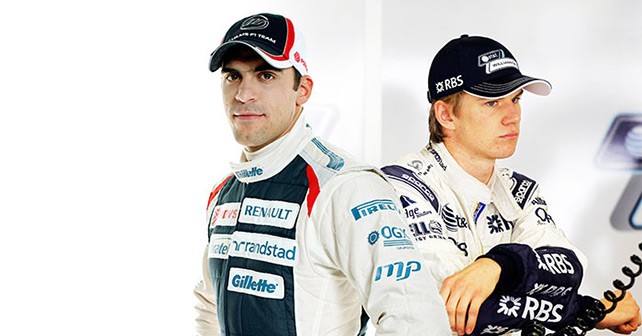
That the Ministry of Youth Affairs and Sports in India termed Formula 1 as entertainment and ‘not’ a sport has been written about by virtually every Formula 1 reporter, journalist, columnist, blogger, and fan in India. And quite obviously so! I had drawn a sword myself. But then, I remembered the old adage, ‘The pen is mightier than the sword.’ In the modern world, it’s the keyboard though.
This column isn’t about that statement from the Ministry, but draws inspiration from it. It also takes a few cues from the legendary John Surtees, the only man to have won World Championships on both two and four wheels. Don’t worry, I’m not here to argue the case on behalf of Formula 1 once again, because in my earlier columns I’ve always regarded F1 as a man-machine sport, much like sailing or shooting for that matter.
But to be absolutely clear, I did check the meaning of the word ‘sport’ in the dictionary before proceeding (yes, this was an inspiration from the fallen legend, Lance Armstrong).
While there’s no question that Formula 1 (and more so, motorsport) is a sport, the sport does lack a certain structure to it. The easiest way to explain this is by asking, ‘Who is the number one driver in the world?’ Would it be Sebastian Vettel for winning his third successive Formula 1 title? Or Fernando Alonso for coming a close second? And let’s not forget that Formula 1 isn’t the only form of racing in the world (or governed by the FIA). This would then open up the option of including the likes of Romain Grosjean (for winning the Race of Champions), Sebastian Loeb (World Rally Champion), Jorge Lorenzo (MotoGP Champion), Ryan Hunter-Reay (Indy Car Champion), and others.
If you shift focus to the other sports like tennis or cricket, there are rankings that allow you to clearly point to the number one ranked player in the world – while still having individual Grand Slam and other Masters Tour winners. Of course, given the nature of our sport and the number of categories it involves, I’m sure that it’s a very tedious task. But, from how I see it, it’ll give the fans something more to cheer about. There is an attempt made by AUTOSPORT, but I’d like to see the FIA come up with their official rankings. And I won’t use the term ‘if we could put a man on the moon,’ but rather say, ‘if we can design cars that can crash at insane speeds and still have drivers walk away without a scratch,’ I am sure official rankings can be worked out if there’s a inclination to do so.
The second part of this structure is about the ‘ladder’ to go up the ranks in motorsport (and Formula 1 in particular). ‘What do I do to get into Formula 1?’ Or ‘which is the best series to race in?’ I get asked these (and similar) questions by hundreds of budding and upcoming racers from India. While karting is the best stepping stone, it’s the subsequent series that matter. During my days as a racer, Formula Ford and Formula 3 were a must-do to get noticed in the highly populated (by very talented drivers) world of high-level motorsport. In 2012, these series are as good as defunct. Now we have GP3, GP2, F2 and the more famous Formula Renault 3.5.
Also, while there are scholarships and young driver programs out there for talented drivers, motorsport is still one of the few sports where you need to cough up a pretty substantial sum even if you’re crowned champion in a category. For example, if you win in GP3 and are targeting GP2 as the next step in your career, chances are that even with a scholarship you’ll need to pool in a few million dollars for a drive!
The underlying effect of this lack of structure is one of the larger reasons why we are seeing pay drivers in modern Formula 1, especially in the entry-level ranks. The best example of this was WilliamsF1 dropping Nico Hulkenberg in 2011 to accommodate a PDVSA-funded Pastor Maldonado. Hulkenberg was lucky that Sahara Force India took him onboard without any financial commitment from the driver, but not always will talented drivers get a lifeline as Hulkenberg did.
Setting an ‘official’ ladder would be extremely difficult, given that there are parallel economies running (and employing a few thousands) in these innumerable junior formulae categories, but a solid scholarship platform is a must to ensure that the best talent does eventually find its way to the top forms of racing.
The ideas in this column do sound ideal, but maybe both these ideas will go a long way to further establish our sport as a ‘sport’!

















Write your Comment